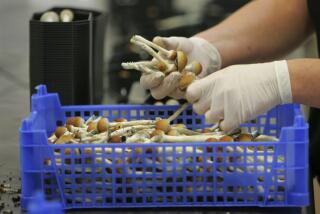New Fuel for Cloning Issue
- Share via
Last February, just days after physicist Richard Seed boasted he would soon attempt to clone humans and one year after Dolly the sheep became the first true clone of another living mammal, Sen. Christopher S. Bond (R-Mo.) rushed an emergency measure onto the Senate floor to ban research into human cloning. “This type of research is morally reprehensible,” the senator said, “and should be off-limits to science.”
The measure seemed a shoo-in, but virtually overnight congressional support for the anti-cloning legislation collapsed, and the bill has lain dormant ever since.
The sudden reversal is attributed to behind-the-scenes lobbying by patient advocacy groups and the biotechnology industry, which argued that a cloning ban would prevent important research to cure disease. The Bond bill would have put a halt, for instance, to Geron Corp.’s efforts to “teach” embryonic mouse cells to produce organs that can be used in transplants.
Henry T. Greeley, a Stanford law and genetics professor, declared after a recent examination of state and federal cloning regulations, “Legislators have lacked the foresight, the technical knowledge, or the candor one would like to see. . . . When legislatures seek to control things they do not understand--and things whose future cannot be confidently foretold--bad results are predictable.”
But the reality of human cloning is beginning to loom so large that legislators won’t be able to ignore it much longer. When Bond introduced his anti-cloning legislation, the technique for cloning a mammal had worked only once, producing Dolly. In the months since, however, scientists have cloned two other mammalian species with minimal failure rates. And on July 22, University of Hawaii biologists stunned scientists by announcing that they had produced more than 50 cloned mice, including clones of clones, and had set up a prototype process for mass cloning.
Of course many barriers remain--all clones so far have been female, for instance, because scientists have been able to manipulate only females’ reproductive system cells. But human cloning, dismissed as science fiction only months ago, is now regarded as feasible, a technology no more involved than other “advanced reproductive technologies” that are now used to help infertile couples bear children.
Given the overwhelming and emotional public sentiment against human cloning, Congress should consider passing a five-year moratorium on the technique, as proposed by the Clinton administration, to give the public and government panels like the National Bioethics Advisory Commission time to weigh the risks and benefits of allowing some people to seek cloning procedures. For couples wherein one partner has genes that could cause serious disease, for instance, cloning one of them may be seen as the safest avenue.
U.S. laws banning human cloning could never fully stop the practice. Americans would probably go abroad for the procedure. And some people would not obey cloning restrictions at home; witness the many couples who in the last decade have ignored state laws against surrogate motherhood contracts. As Lee M. Silver, a Princeton University biologist and geneticist, puts it, “Americans will not be hindered by ethical uncertainty, state-specific injunctions or high costs in their drive to gain access” to new reproductive technologies.
Nothing better exemplifies the limits of politics than legislators’ clumsy attempts to grapple with cloning. Elected lawmakers, nevertheless, have no choice but to do just that and seek to help bridge the growing chasm between science and politics.





